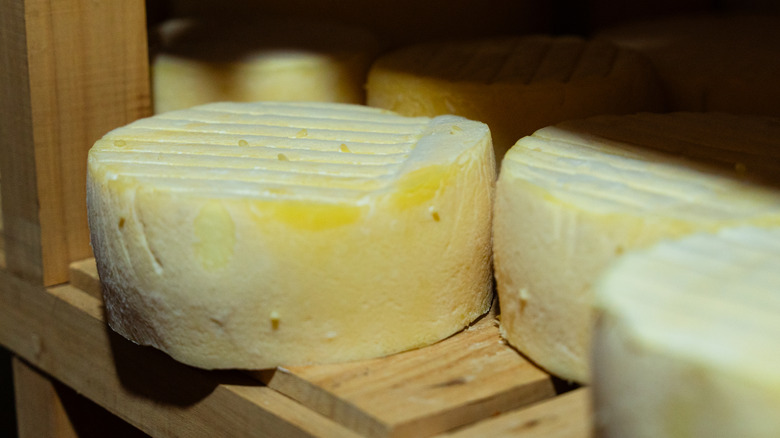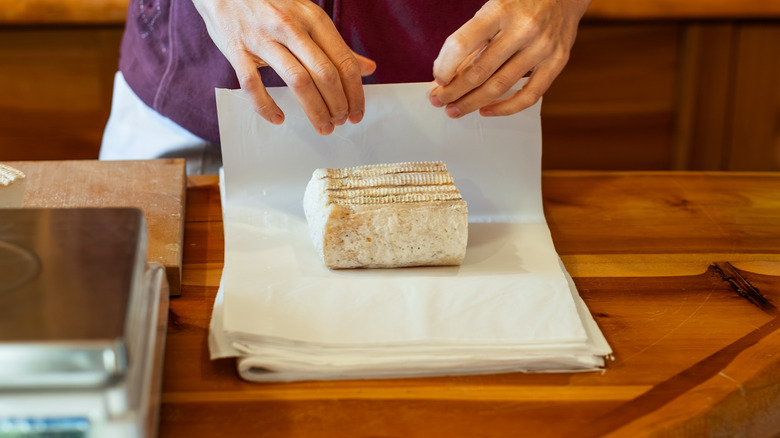The Old-School Method Of Preserving Cheese That You Seriously Shouldn't Do
We may receive a commission on purchases made from links.
Keeping your cheese from turning blue against your wishes can be tough. Your average wedge of brie only stays good for a week in the fridge after opening, and though you can freeze some cheeses like mozzarella, the catch is that freezing can really mess up its texture. An old-school cheese hack floating around the internet (although it's much older than that) suggests that coating your cheese with butter before wrapping it in wax paper or parchment can help preserve it. Still, we asked Molly Browne, education director at Dairy Farmers of Wisconsin, about her thoughts on buttering up your cheese.
Browne has heard of the strategy. But, compared to other methods for preserving cheese, she said, "Anyone attempting to preserve their cheese in butter at home is doing too much! Way too much." Using butter to preserve cheese is a method that U.S. cheesemakers reportedly used in the 18th century, but it makes little sense to apply butter to cut surfaces of modern cheese. Browne gave three reasons why you shouldn't: "First, you're altering the intended flavor and texture profile of the cheese that you ostensibly bought for its flavor and texture profile. Second, you're creating optimal conditions for unwanted microflora to colonize the surfaces of your cheese. And finally, you're wasting perfectly good butter, which is a crime against dairy." She made one exception — if you actually enjoy the taste of butter and cheese, then go ahead, but it's not worth the trouble if your only goal is preservation.
Buttering cheese isn't the best method of preservation
The butter method does have a real history, as Molly Browne explained: "Historically, cheesemakers would apply the cloth wrapper to the newly formed cheese and then slick it down with a light coating of fat — usually lard or butter." This prevents the rind from becoming brittle, and limits the moisture loss that can occur as the cheese ages. However, as Browne mentioned, butter fuels the growth of microflora which can spoil the cheese.
The buttering method is sometimes used for specific varieties of cheese — and Browne believes this is where the current hack likely comes from. "This practice is most commonly associated with clothbound cheddars and a few clothless styles of cheeses as well, including some made in Wisconsin, where cheesemaking has been a craft for over 180 years, since before it even became a state," she noted. Fittingly, clothbound styles are made by wrapping the cheese in cheesecloth and aging it, which usually imparts a nutty flavor. But this artisan method probably doesn't apply to the cheese you're storing at home.
With all that said, what should you do instead of buttering or freezing your cheese? You can still use cheese paper or parchment, or even specialized cheese-friendly packaging, like Formaticum Professional Grade Cheese Storage Bags. Similarly, there's a simple vinegar hack for preserving cheese which also seals it off from moisture while combatting the growth of bacteria and mold. With these cheese storage tricks, your favorite cheese will last longer than it takes you to eat it.

